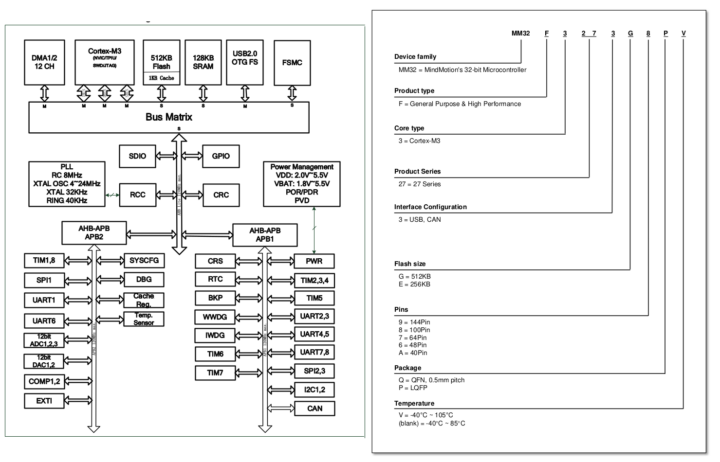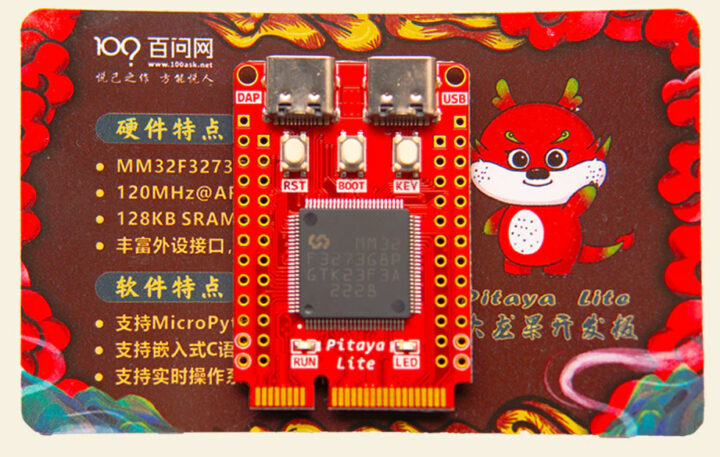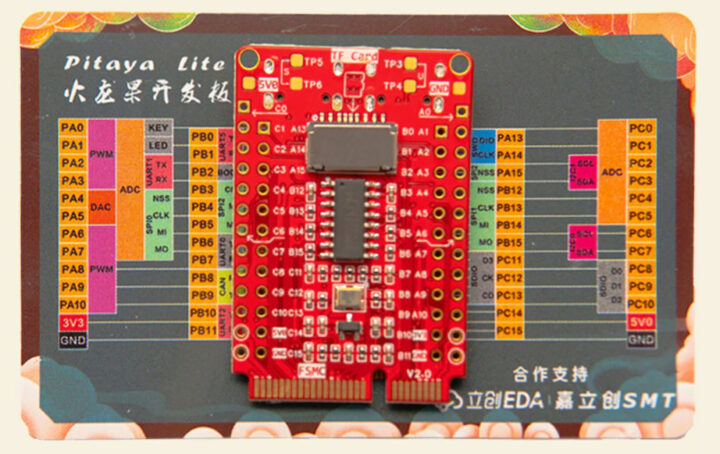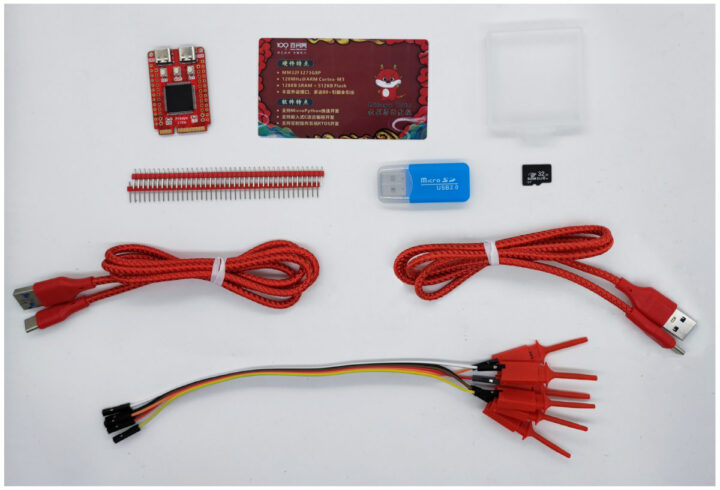DshanMCU Pitaya Lite is an MCU development board based on yet another STM32 alternative: MindMotion MM32 Arm Cortex-M3 microcontroller that is said to be compatible with STM32.
The MCU can be clocked at up to 120 MHz, embeds 128KB SRAM, 512KB flash, and the board offers two USB Type-C ports for USB and DAP debugging, a MicroSD card slot, a few buttons, I/Os are routed via through holes as well as a mini PCIe connector that can be used to connect a display.
Pitaya Lite specifications:
- MCU – MindMotion Microelectronics MM32F3273G8P Arm Cortex-M3 microcontroller @ 96MHz (standard) to 120MHz (max) with 128KB SRAM, 512kB Flash; LQFP100 package
- Storage – MicroSD card
- Display – Via mini PCIe port with FSMC (Flexible Static Memory Controller), supports Intel 8080 LCDs
- USB – 2x USB Type-C ports, including one for DAPLink and serial access
- Expansion – 2x 25-pin GPIO headers and Mini PCIe connector with 52 pins that include: 8x serial ports, 2x I2C, 2x SPI, 8x timers, 1x CAN Bus, 2x I2S, 2x ADCs, 2x DACs
- Misc – Reset, Boot, and User keys, DAPLink status LED, user LED
- Power Supply – 5V via USB Type-C port
- Dimensions – 44 x 30 mm
DongShanPi says the board and MM32 microcontroller can run MicroPython-1.16 firmware, as well as FreeRTOS and RT-Thread real-time operating system. There’s plenty of documentation on GitHub, albeit mostly in Chinese, with some hardware design files (PDF schematics), 3D files, developer guides for MicroPython, “embedded C”, and real-time operating systems, and datasheets (here’s the one in English!). The MM32F3273G8P microcontroller is also listed on the Keil website since it should be supported by the Keil MDK 5 IDE.

Note the MM32F3273G8P does not seem to have a direct “STM32F3273G8P” equivalent, so I’m not sure if it is pin-to-pin compatible with a specific STM32 sub-family.
The Pitaya Lite MM32 board can be purchased for $4.04 on Aliexpress, and a bundle of 5 “MM32F303” microcontrollers is also offered on the same page for $14.42. This exact chip can also be found on LCSC for $3.48. The Pitaya Lite board sold on Aliexpress comes with the card shown in the photo, but the documentation appears to show a bundle with cables, a microSD card, a card reader and some male headers that may be available in mainland China.

Jean-Luc started CNX Software in 2010 as a part-time endeavor, before quitting his job as a software engineering manager, and starting to write daily news, and reviews full time later in 2011.
Support CNX Software! Donate via cryptocurrencies, become a Patron on Patreon, or purchase goods on Amazon or Aliexpress







